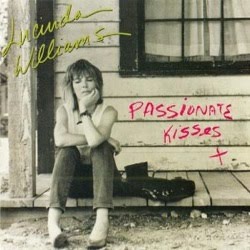
I didn't ganyan. I didn't ikili. And I certainly didn't gifte.
As far as I can tell, those are the words for win, quiniela and daily double at horse tracks in Turkey. And for three races at Istanbul's massive Veliefendi Racetrack, I didn't come close to picking even one horse that finished at the front of the pack.
I had an excuse, though. Everything was in Turkish – the program, the tote board, the racing form, the tout sheets. Everything except some of the horse's names, which was part of my downfall. I mean, how could I not bet on a filly named Bye Bye Baby when she was running against the likes of Gülipek, Sari Papatyam and De Nîgrîs? Who cares if she was 25-to-1?
Placing a bet was high comedy in itself. The tellers neither spoke nor understood English. So I would hand them exact change (usually 5 or 10 lira) and jab my finger at the program to indicate the horse I wanted to bet on. They all found this highly amusing. The thought of betting a perfecta or trifecta box was so daunting I never attempted it. For all I know, they don't even have perfectas and trifectas.
The odds were a challenge, too, and it took a few races to figure them out. They seemed to the calculated to the nickel, or the kuru, or whatever it's called. The odds on a horse would not be, say, 3 to 1. They would 2.85 to 1. I spent two or three races thinking it was 2 to 85 or something, which would be a longshot in any language. No wonder so many people were excited to have the winner.
Once I figured it out -- and after not picking a winner in my first three tries -- I decided to go with the chalk in the fourth race, which was aptly named Western Girl. As any horse coming out of the 16 gate should, she bided her time at the back of the pack and romped home at the finish, paying a paltry 1.85 to 1 on a five lira bet. I happily cashed my winning ticket, and after a couple more futile tries I called it a night and took a taxi back to Sultanahmet.
As far as I can tell, those are the words for win, quiniela and daily double at horse tracks in Turkey. And for three races at Istanbul's massive Veliefendi Racetrack, I didn't come close to picking even one horse that finished at the front of the pack.
I had an excuse, though. Everything was in Turkish – the program, the tote board, the racing form, the tout sheets. Everything except some of the horse's names, which was part of my downfall. I mean, how could I not bet on a filly named Bye Bye Baby when she was running against the likes of Gülipek, Sari Papatyam and De Nîgrîs? Who cares if she was 25-to-1?
Placing a bet was high comedy in itself. The tellers neither spoke nor understood English. So I would hand them exact change (usually 5 or 10 lira) and jab my finger at the program to indicate the horse I wanted to bet on. They all found this highly amusing. The thought of betting a perfecta or trifecta box was so daunting I never attempted it. For all I know, they don't even have perfectas and trifectas.
The odds were a challenge, too, and it took a few races to figure them out. They seemed to the calculated to the nickel, or the kuru, or whatever it's called. The odds on a horse would not be, say, 3 to 1. They would 2.85 to 1. I spent two or three races thinking it was 2 to 85 or something, which would be a longshot in any language. No wonder so many people were excited to have the winner.
Once I figured it out -- and after not picking a winner in my first three tries -- I decided to go with the chalk in the fourth race, which was aptly named Western Girl. As any horse coming out of the 16 gate should, she bided her time at the back of the pack and romped home at the finish, paying a paltry 1.85 to 1 on a five lira bet. I happily cashed my winning ticket, and after a couple more futile tries I called it a night and took a taxi back to Sultanahmet.







